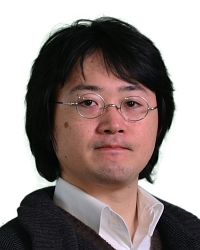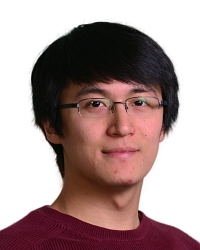TR2020-135
Generative Deep Learning Model for Inverse Design of Integrated Nanophotonic Devices
-
- , "Generative Deep Learning Model for Inverse Design of Integrated Nanophotonic Devices", Lasers and Photonics Reviews, DOI: 10.1002/lpor.202000287, Vol. 2020, pp. 2000287, October 2020.BibTeX TR2020-135 PDF
- @article{Tang2020oct,
- author = {Tang, Yingheng and Kojima, Keisuke and Koike-Akino, Toshiaki and Wang, Ye and Wu, Pengxiang and TaherSima, Mohammad and Jha, Devesh K. and Parsons, Kieran and Qi, Minghao},
- title = {{Generative Deep Learning Model for Inverse Design of Integrated Nanophotonic Devices}},
- journal = {Lasers and Photonics Reviews},
- year = 2020,
- volume = 2020,
- pages = 2000287,
- month = oct,
- doi = {10.1002/lpor.202000287},
- url = {https://www.merl.com/publications/TR2020-135}
- }
- , "Generative Deep Learning Model for Inverse Design of Integrated Nanophotonic Devices", Lasers and Photonics Reviews, DOI: 10.1002/lpor.202000287, Vol. 2020, pp. 2000287, October 2020.
-
MERL Contacts:
-
Research Areas:
Artificial Intelligence, Communications, Machine Learning, Optimization, Signal Processing
Abstract:
We propose a novel Conditional Variational Autoencoder (CVAE) model for designing nanopatterned integrated photonic components. In particular, we show that prediction capability of the CVAE model can be significantly improved by adversarial censoring and active learning. Moreover, generation of nanopatterned power splitters with arbitrary splitting ratios and 550 nm broadband optical responses from 1250 nm to 1800 nm have been demonstrated. Nanopatterned power splitters with footprints of 2.25 x 2.25 um2 and 20 x 20 etch hole positions are the design space, with each hole position assuming a radius from a range of radii. Designed nanopatterned power splitters using methods presented herein demonstrate an overall transmission of about 90% across the operating bandwidth from 1250 nm to 1800 nm. To the best of our knowledge, this is the first time that a state-of-the-art CVAE deep neural network model has been successfully used to design a physical device.


